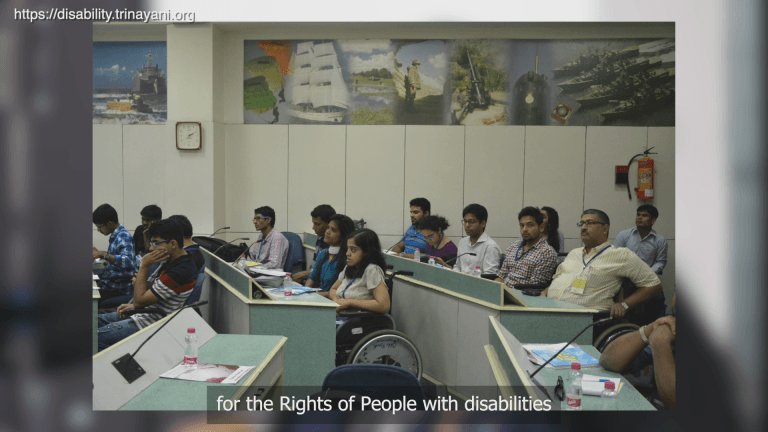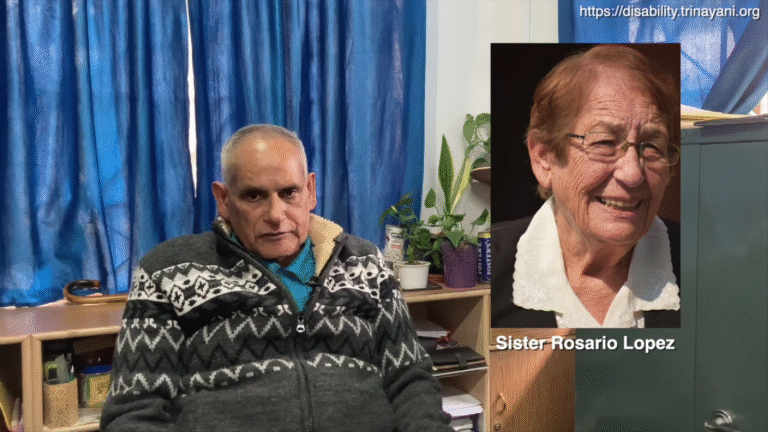Model School for Visually Handicapped – Dehradun
This film, through the narration of Amit Kumar Sharma, Principal, MSVH, guides us into the heart of Model School for Visually Handicapped – Dehradun – where inclusion isn’t just a concept, it’s a way of life.
From early childhood education to advanced classes in Chemistry, Python programming and Mathematics, the film showcases how blind and sighted students learn side by side, using innovative tools and assistive tech!
It’s not just about education, it’s about transformation. This film will open your eyes to what’s possible when we remove barriers and believe in every child’s potential.
Let’s visit a place where the limits of vision don’t define the scope of learning! Here, students who can’t see the world grasp all the concepts, one tactile page, one Braille dot and one line of code at a time. At the Model School (NIVH), Dehradun, education is reimagined, independence is nurtured and potential is not just believed in but built.
*
Two years ago, we started Bal Vatika in our school.
Our school is a CBSE-affiliated school.
And in Bal Vatika, the children are doing very well, because if the base is strong, the child does well throughout life.
And psychologists also say that we learn up to 80% of our knowledge in ages 6–7 years.
I also personally believe that if the children’s knowledge base is strong, their concepts are more clear, then they will be able to perform better.
Every year, in the second week of February, our admission forms are released.
Children from all over the country apply here.
We offer comprehensive facilities—including accommodation, meals, uniforms, and books, all provided to the children free of cost.
After a student passes Class 12, we also provide a merit-based scholarship of ₹24,000 per year for the next five years.
Mathematics is studied here by both our sighted and blind students.
Sighted students can see and understand everything that’s printed.
Likewise, our blind students learn through what’s called the tactile form, which we provide to them.
The blind students can feel it by touching it.
For example, if they need to create a shape, they can make it themselves and understand how that shape is formed.
Everything is adapted this way.
If they need to understand parts, like how one whole can be divided into fractions such as 1/2, 1/7 or 1/5 they can grasp those concepts too.
And when it comes to 3D shapes, sighted students can see and comprehend them visually, but for our blind students, we provide solid, 3D models they can touch and understand with care and ease.
The syllabus is the same; only the method of teaching is different.
While sighted students can easily understand printed material visually, we offer the same knowledge to our blind students through tactile or 3D formats.
This helps them understand concepts more easily, and they actively follow up with questions.
So, first, they use an instrument called a Taylor Frame.
It’s used for calculations.
This boy, for example, will first complete his calculations on it.
He has written some digits here.
But since the calculations don’t stay permanent on the Taylor Frame, he’ll transfer them by making his own notes on a Brailler.
A boundary drawn across the ridges of Vyas
X A Y
Shivam?
Yes ma’am?
Would you like to say something about this Shivam?
About what?
Microplastic.
It’s easy to make plastic, but once it’s used, breaking it down is extremely difficult. It takes hundreds of thousands of years to decompose. So, only by reusing it can we fix that problem.
For the first time, PGT Chemistry course has been introduced here.
We conduct this course using braille, special equipment, tactile materials, and making necessary modifications.
For example, this is a hydrogen diagram – through tactile form, we aim to demonstrate how hydrogen gas is formed.
The text is in Braille, and the diagram is tactile, enabling blind students grasp the concept effectively.
All the compounds required for Class 12 are available here, and they’re also used in Class 11.
We’ve adapted the labels in two formats: large print for students with low vision and Braille for those who are blind.
For our students, for each chapter, we make individual modifications while teaching, strictly adhering to CBSE norms.
Our ministry organizes the Global IT Challenge. In 2021 it was held in South Korea. The event featured various activities in the IT sector.
The four prizes that India won in IT, were brought home by students from our school.
Recently, we introduced the Science stream in our school and received CBSE affiliation as well.
As a result, our students now have CS (Computer Science) as a subject in Class 11.
What are you doing right now kids?
We’re learning Python, sir.
You’re learning Python? Okay. Could you demonstrate please.
Python is a programming language used for writing and executing code.
For example, if we want to print a value in Python, we need to write ‘print’. And if we want to write a string, we have to enclose it in quotes.
If I write my name here… now I’ll close the bracket. And if I press enter, the value will be printed.
Our students are really good at Braille.
In fact, they win awards even in National Braille reading and writing competitions, even securing the first prize.
But computer literacy is a skill that will help them throughout their lives, so we start computer literacy and teaching computers from Class 1 itself.
Recently, the Class 9 and 11 exams held here were also conducted on computers, because we believe that children should be independent in the future.
CBSE also provides the facility for students to take their board exams on laptops or computers.
Now, the students will explain how exams in this school are conducted using computers.
Our exams are conducted on computers, and they take place in this computer lab.
All the computers here are disconnected from the internet to eliminate any chances of cheating.
We receive the question paper about 15 minutes before the exam starts, giving us a little time to read it.
When the exam begins, we type our answers.
The question paper is also given to us in Word file, which is highly accessible for us. The word software is very accessible and we can read the content using screen readers like NVDA or JAWS, and we can type our answers easily.
Our teacher gives us the question papers through pen drives, which are inserted into each computer.
After writing our answers, we save the file, and then the teacher collects the responses back through the pen drives for further processing.
Then this material is sent to the teachers via email, which also helps save paper.
It also saves the students’ time and gradually reduces their dependency on scribes.
Since it’s usually not possible for them to take board exams without a scribe, this process is helping slowly reduce that need.
These are JAWS commands. They help students navigate the computer so they can easily perform all the tasks we assign them.
There are many such commands.
NVDA software also has its own set of commands, these ones are specifically for JAWS.
This is the alphabet in the computer era.
Just like we teach kids “A for Apple”, here in the computer lab, we teach them “A for Avast”, “B for Bluetooth”.
Very young children from Bal Vatika, as young as 4 or 5 years old, all with visual impairment come here, from all over the country.
In such situations, a child who has never seen the world, who can only feel through touch, and who has to live here without their parents, who has only known the touch of their parents and never experienced this world or this environment, and yet, when you look at the faces of my children here, you’ll see a natural happiness shining through.
Little bit laughter and little bit happiness?
Yes sir!
Oh No, why should it be less, happiness should be much more! Correct?
A lot of laughter, a lot of happiness, Change the song my dears.
Ok, now, sing the song, itti si hasi. One, two , three, start.
Itti si hasi, itti si khushi, itta sa tudka chand ka
Khwabo ke tinko se chal banaye aashiyan
Itti si hasi, itti si khushi, itta sa tudka chand ka
Khwabo ke tinko se chal banaye aashiyan
Resources
3D learning models, accessible learning, adaptive teaching, assistive technology, Bal Vatika, blind coders, blind students, CBSE school, children with disabilities, computer literacy, disability inclusion, early childhood education, education for all, equal opportunity, inclusive classrooms, inclusive education, Inclusive India, merit scholarships, school innovation, special education, tactile learning, Visual Impairment
Dive Deeper: More on Disability
Learn about the most common inquiries surrounding disability, education, legislation, accessibility, employment and other sectors related to disability.


Playlist
Access & Inclusion


Playlist
Adaptive Sports


Playlist
Alternative Communication Methods


Playlist
Autism & Neurodiversity


Playlist
Blindness & Adaptations


Playlist






